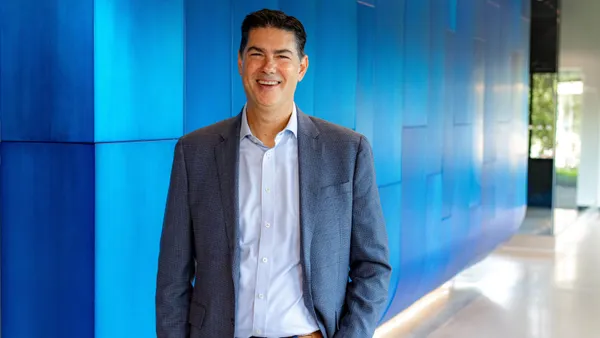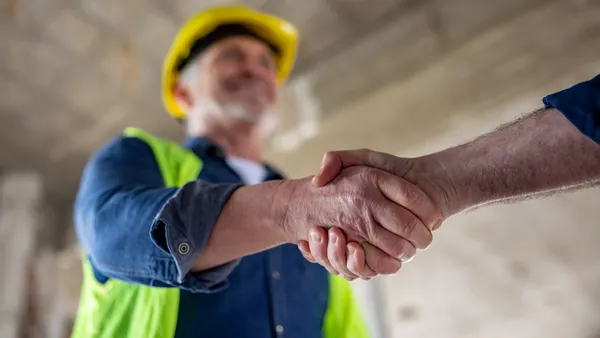In this occasional series, we talk with people and companies breaking new ground in construction.
Like many architects, Scott Reynolds was frustrated with the building code. And not because it threw a wrench in any of his project plans. Instead, his problem was in sorting through it.
"It's a very complex ecosystem to navigate and because of that it makes it quite difficult to coordinate a project," said Reynolds, who started his architectural career with Hassell in Hong Kong before moving back to the U.S. to work for KPF.
So, he sat down with his brother Garrett, then a software engineer at PlanGrid, to come up with a better way to navigate the code. The result was UpCodes. The mobile-optimized web app offers free and paid versions through which users can review base codes across 43 states and New York City, with more states and cities to come. In addition to consistent formatting, the platform offers options for markup and sharing, and pages for gathering project-specific code sections.
Since its launch in early 2016, the platform is up to 61,000 users each month, a figure that’s grown 10% week-over-week so far this year.
The pair’s secret sauce is custom-built technology that scans building codes online and pings the UpCodes team when it detects that a change has been made. A team member looks at the change and modifies their system accordingly. That update is pushed out to users, who are notified that the code has changed. "It's much like a Kayak.com search engine but built for AEC," he said.
Construction Dive talked with Scott, who joins Garrett as an UpCodes co-founder, about the growing construction technology space and the company's place in it.
This interview has been edited and condensed.
The consistent format from publication to publication is unique.
REYNOLDS: That's a result of my experience dealing with a lot of different codes, which come in a lot of different formats. A lot of what we did was bringing structure to the data. Once you dive into the code, you can copy and paste sections or save them onto a project page. And, as far as we know, this is the only place you can link to a section of code [online]. Users can select sections of code, which creates a unique URL to those sections [in UpCodes] that can be shared, such as in emails or blog posts.
Do you see any challenges applying new technology to a process that’s been analog for a very long time?
REYNOLDS: One of the challenges we foresee is getting people away from physical books and some of the PDFs and toward the online database and then learning to trust that database. I think a lot of that will happen organically and between individuals. Dealing with code is an inherently collaborative process, so having colleagues talk to each other, share sections over email and see in blogs that these codes can be linked and can live in the cloud, will help with adoption.
Folks familiar with the book like to highlight and dog ear pages and put Post-it notes in them. To help them transition to UpCodes, we are looking to build out a lot of that functionality. Right now, users can bookmark or save the section and comment, but they can't yet yet highlight or change the formatting.
What role do you see UpCodes having in construction workflows in the future?
REYNOLDS: Our long-term goal is to have a unified database to answer any code question you have — whether you're in the office on your desktop or tablet, or out in the field on a mobile device. Every piece of code you need or every query you have is just a few taps away.
UpCodes is part of a wave of AI and machine learning in construction technology today. What's the opportunity there?
REYNOLDS: [Garrett’s] background is in machine learning and AI. Something we want to harness is taking this data and building predictive models. So if you're working on a certain building, that would mean predicting what sections [of code] might be relevant and bringing those to your attention first. We're moving away from the user pulling information — such as through a Google search — to us pushing that out to you. Ideally that would happen within the design or BIM environment. Harnessing object metadata will let us understand whether you’re code compliant as you design and model.
Do you think this will change industry workflow wholesale, or stay limited to tech adopters?
REYNOLDS: Construction is a massive industry that has been largely overlooked by technology solutions. There's a huge opportunity there and a lot of new startups coming up. We're in the Y Combinator, which is where PlanGrid started, with a handful of other construction companies tackling unique problems. I think we're on a new wave of construction tech, and it's really exciting to see them tackling all these different problems.
How do you feel about the potential for investment in the space?
REYNOLDS: Interest has been quite high and there are a lot of forerunners in that. PlanGrid shed a lot of light on how big these [construction-tech startup] companies can grow. That helped open exposure for other companies coming up in the industry. Previously, investment in technology focused on things like social media because of the size of their audience. A lot of the investors are realizing, to quote a famous essay, that "software is eating the world" and that there are huge opportunities in other sectors as well, like AEC.














